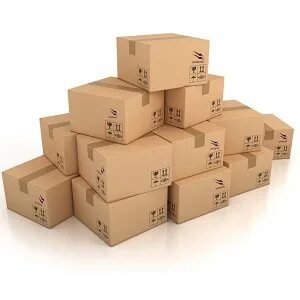E-Commerce Packaging Market 2023 Detailed Analysis of Top Ventures with Regional OutlookPosted by Pearl Smith on April 14th, 2023  E-commerce packaging refers to the materials and design used for packaging products that are sold online and shipped to customers. E-commerce packaging serves multiple purposes, including protecting the products during shipping, creating a positive customer experience, and promoting the brand identity. Here are some key considerations for e-commerce packaging: Protection: E-commerce packaging should be designed to protect the products from damage during shipping. This may include using durable materials such as corrugated cardboard, bubble wrap, or air cushions to provide cushioning and prevent breakage or damage. Size and Weight: E-commerce packaging should be optimized for size and weight to minimize shipping costs. Oversized or heavy packaging can result in higher shipping fees and environmental impact. Right-sizing the packaging to fit the product snugly while still providing adequate protection can help reduce shipping costs and minimize waste. Sustainability: Many customers today are environmentally conscious and prefer sustainable packaging options. Using recyclable, biodegradable, or compostable materials for e-commerce packaging can help reduce the environmental impact and align with customer values. Branding: E-commerce packaging can be used as an opportunity to reinforce the brand identity. Customized packaging with the brand logo, colors, and messaging can create a memorable unboxing experience for customers and enhance brand recognition. Ease of Use: E-commerce packaging should be easy to open and reseal, as well as convenient for customers to dispose of or recycle. Consider including clear instructions or labels on the packaging to guide customers on how to open and dispose of it properly. Cost-effectiveness: Balancing the cost of packaging materials and design with the overall budget is an important consideration. While it's important to use quality materials to protect the products, it's also important to optimize costs and find cost-effective solutions. Returns: E-commerce packaging should also be designed to accommodate returns, as returns are common in online retail. Easy-to-open packaging with resealable features can make returns more convenient for customers and help streamline the returns process. The e-commerce packaging market has been experiencing significant growth in recent years, and this trend is expected to continue in the foreseeable future. Several factors contribute to the growth of the e-commerce packaging market, including: ✦ E-commerce industry expansion: The e-commerce industry has been expanding rapidly, with more consumers opting to shop online due to convenience, wider product selection, and competitive pricing. This growth in the e-commerce sector has directly fueled the demand for e-commerce packaging, as products need to be shipped securely and efficiently to consumers' doorsteps. ✦ Increased consumer expectations: Consumers have become increasingly demanding when it comes to the packaging of their online purchases. They expect packaging to not only protect the product during transit but also provide a positive unboxing experience. As a result, e-commerce retailers are investing in premium and customized packaging solutions to meet consumer expectations, driving the growth of the e-commerce packaging market. ✦ Focus on sustainability: Sustainability has become a significant driver in the e-commerce packaging market. Consumers are increasingly concerned about the environmental impact of packaging waste, and e-commerce retailers are under pressure to adopt eco-friendly packaging solutions. This has led to the development and adoption of sustainable packaging materials and practices in the e-commerce industry, driving the growth of the e-commerce packaging market. ✦ Technological advancements: Advancements in packaging technology, such as on-demand packaging, smart packaging, and automated packaging solutions, have revolutionized the e-commerce packaging market. These technologies offer cost-effective, efficient, and customized packaging solutions, which are in high demand by e-commerce retailers to streamline their packaging operations and meet consumer expectations. ✦ Globalization of e-commerce: E-commerce has become a global phenomenon, with cross-border e-commerce gaining popularity. This has led to an increased need for international shipping and packaging solutions, driving the growth of the e-commerce packaging market. ✦ Changing consumer demographics: The changing demographics of consumers, including the rise of millennials and Gen Z as key consumer groups, have impacted the e-commerce packaging market. These consumer segments prioritize convenience, sustainability, and personalized experiences, which has influenced the demand for e-commerce packaging solutions that align with their preferences. The demand for e-commerce packaging continues to be on the rise due to the growing e-commerce industry and changing consumer preferences. Here are some key factors driving the demand for e-commerce packaging: ➢ Increased e-commerce sales: The e-commerce industry has been experiencing rapid growth, with more consumers choosing to shop online. This has led to an increased demand for packaging materials to safely transport products from e-commerce retailers to consumers' doorsteps. ➢ Changing consumer preferences: Consumers are placing more emphasis on the packaging of their online purchases. They expect packaging to not only protect the product during shipping but also provide a positive unboxing experience. As a result, e-commerce retailers are investing in high-quality, visually appealing packaging solutions to meet consumer preferences. ➢ Sustainability concerns: Sustainability has become a significant driver in the e-commerce packaging market. Consumers are increasingly concerned about the environmental impact of packaging waste and are seeking eco-friendly packaging materials that are recyclable, biodegradable, and made from sustainable sources. This has led to a growing demand for sustainable packaging solutions in the e-commerce industry. ➢ Customization and branding: E-commerce retailers are increasingly using packaging as a way to differentiate their brand and create a memorable unboxing experience for their customers. Customized packaging with unique designs, logos, and branding elements is in high demand as e-commerce companies seek to establish their brand identity and create a cohesive brand experience for consumers. ➢ Product protection and safety: E-commerce packaging needs to ensure that products are protected during transit to prevent damage or breakage. This requires packaging materials that are durable, resilient, and capable of providing adequate cushioning and protection for a wide range of products, from electronics to fragile items. ➢ Global e-commerce and cross-border shipping: The globalization of e-commerce has led to increased cross-border shipping, which requires robust packaging materials that can withstand international shipping and handling. This has driven the demand for specialized packaging solutions that can meet the unique requirements of cross-border e-commerce. ➢ Compliance with regulations: E-commerce packaging is subject to various regulations and standards, such as shipping regulations, product safety standards, and labeling requirements. E-commerce retailers need to ensure that their packaging materials comply with these regulations, which has led to an increased demand for compliant packaging solutions. The e-commerce packaging market has a wide range of applications across various industries and sectors. Some of the key applications of e-commerce packaging include: ✦ Retail and Consumer Goods The e-commerce packaging market offers several benefits to businesses, consumers, and the environment. Here are some key benefits of e-commerce packaging: ◘ Product Protection: E-commerce packaging is designed to protect products during transit, ensuring that they arrive at their destination in good condition. Packaging materials such as corrugated boxes, bubble wrap, and foam inserts provide cushioning and protection against shocks, vibrations, and rough handling during shipping, reducing the risk of product damage or breakage. ◘ Branding and Customization: E-commerce packaging provides an opportunity for businesses to showcase their brand and create a memorable unboxing experience for consumers. Customized packaging with unique designs, logos, and branding elements helps businesses to establish their brand identity, enhance brand recognition, and create a cohesive brand experience for customers. This can lead to increased brand loyalty and repeat purchases. ◘ Enhanced Consumer Experience: E-commerce packaging can contribute to a positive consumer experience, as it is often the first physical interaction that consumers have with a brand when they receive their online purchases. Visually appealing packaging, personalized messages, and special inserts can create a sense of excitement and delight for consumers, enhancing their overall satisfaction with the product and the brand. ◘ Sustainability: Many e-commerce packaging materials are now available in sustainable options, such as recyclable, biodegradable, and compostable materials. Sustainable e-commerce packaging helps businesses reduce their environmental footprint and meet the increasing demand for eco-friendly packaging from environmentally-conscious consumers. It also contributes to waste reduction and promotes a circular economy by encouraging recycling and reducing landfill waste. ◘ Cost-effective: E-commerce packaging materials are often designed to be lightweight, which can help reduce shipping costs for businesses. Lightweight packaging can lower shipping fees and reduce the amount of packing materials required, resulting in cost savings in shipping and logistics. ◘ Convenience and Efficiency: E-commerce packaging is designed to be easy to assemble, pack, and seal, making it convenient for businesses to package their products efficiently. Many e-commerce packaging materials also come with features such as self-adhesive closures, tear strips, and easy-open tabs that make it convenient for consumers to open and unpack their purchases. ◘ Cross-border Shipping: E-commerce packaging is crucial for cross-border shipping, as it ensures that products are protected during international transit. Specialized packaging materials for cross-border shipping, such as customs-compliant labels, tamper-evident packaging, and documentation pouches, help businesses meet the unique requirements of international shipping and facilitate smooth customs clearance. Overall, e-commerce packaging offers numerous benefits, including product protection, branding opportunities, enhanced consumer experience, sustainability, cost-effectiveness, convenience, and efficiency. As the e-commerce industry continues to grow, e-commerce packaging is expected to play a critical role in meeting the packaging needs of businesses and consumers while addressing sustainability concerns and improving overall customer satisfaction. Like it? Share it!More by this author |


